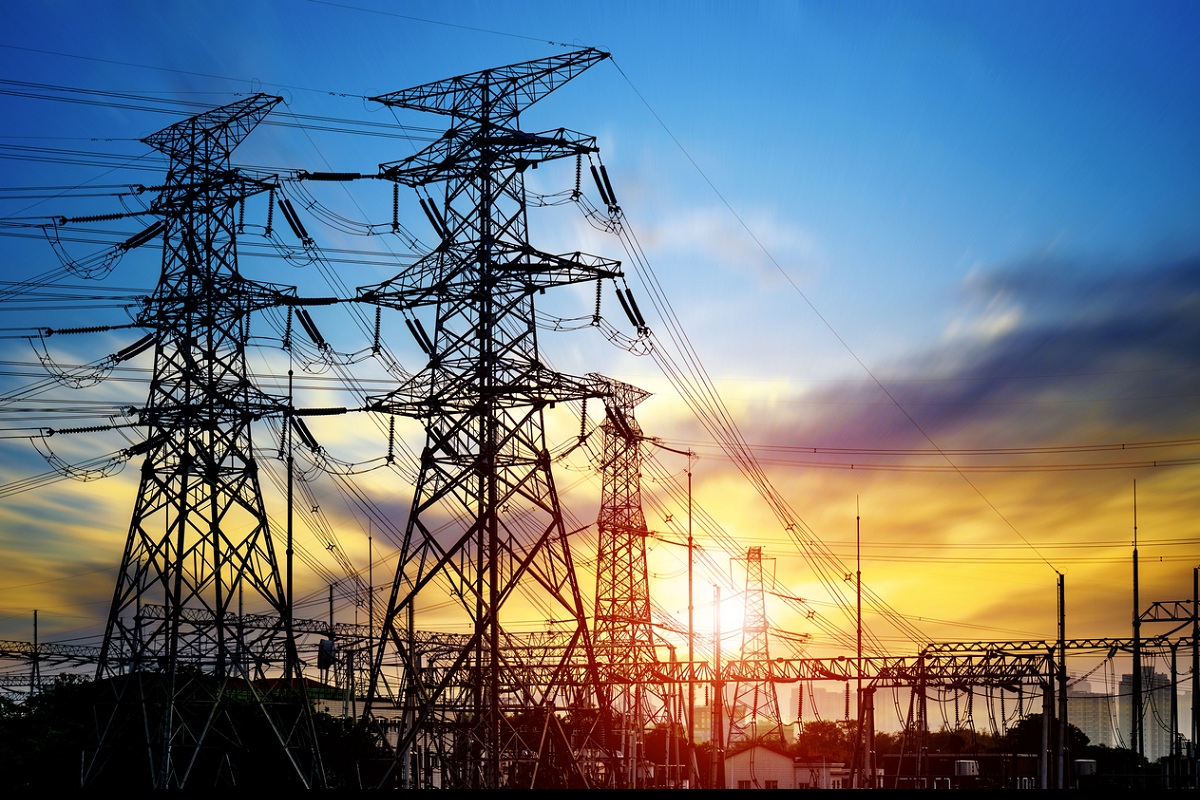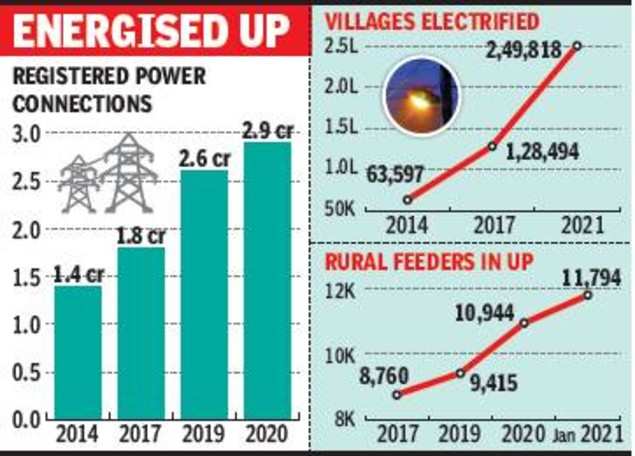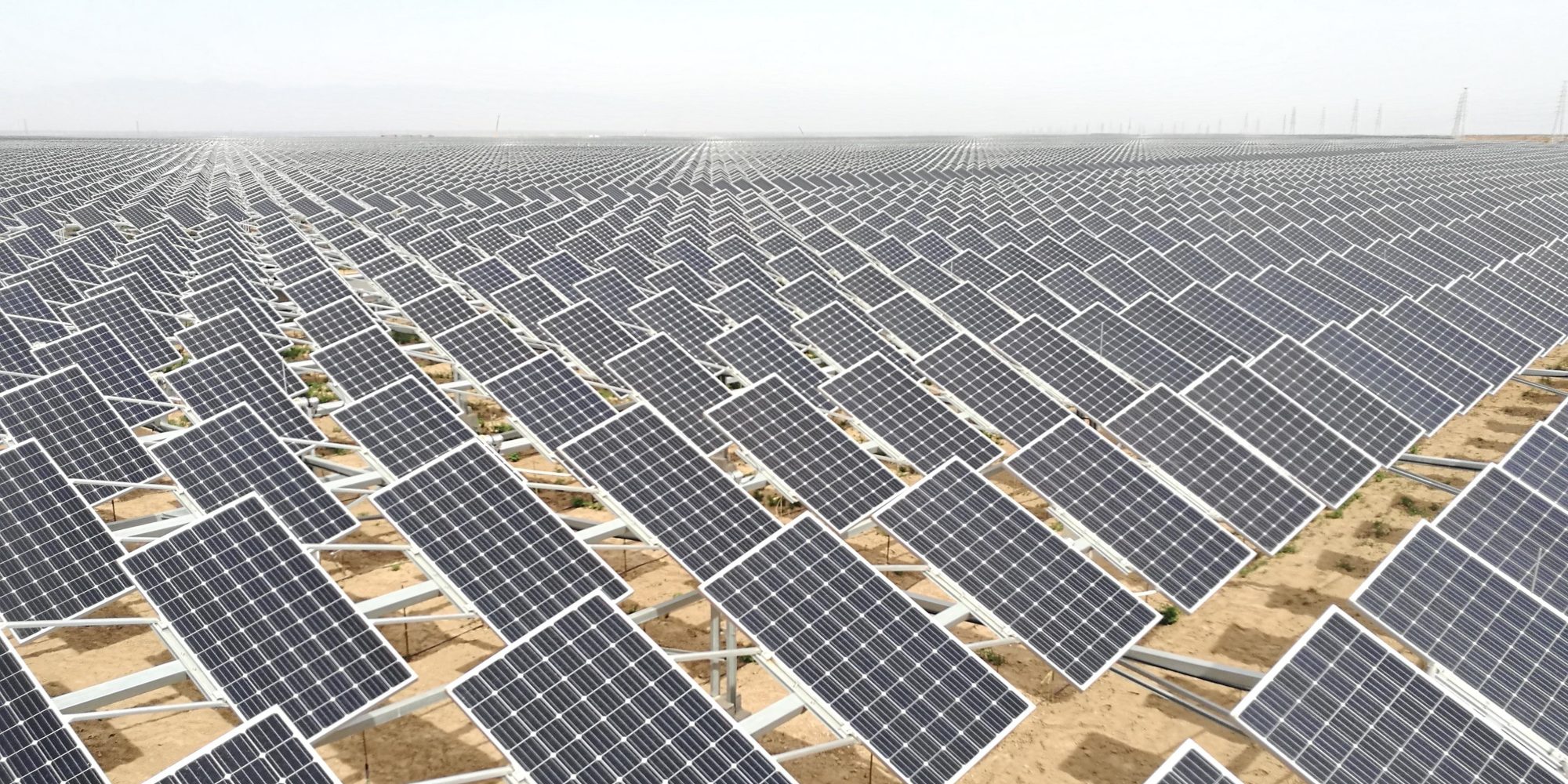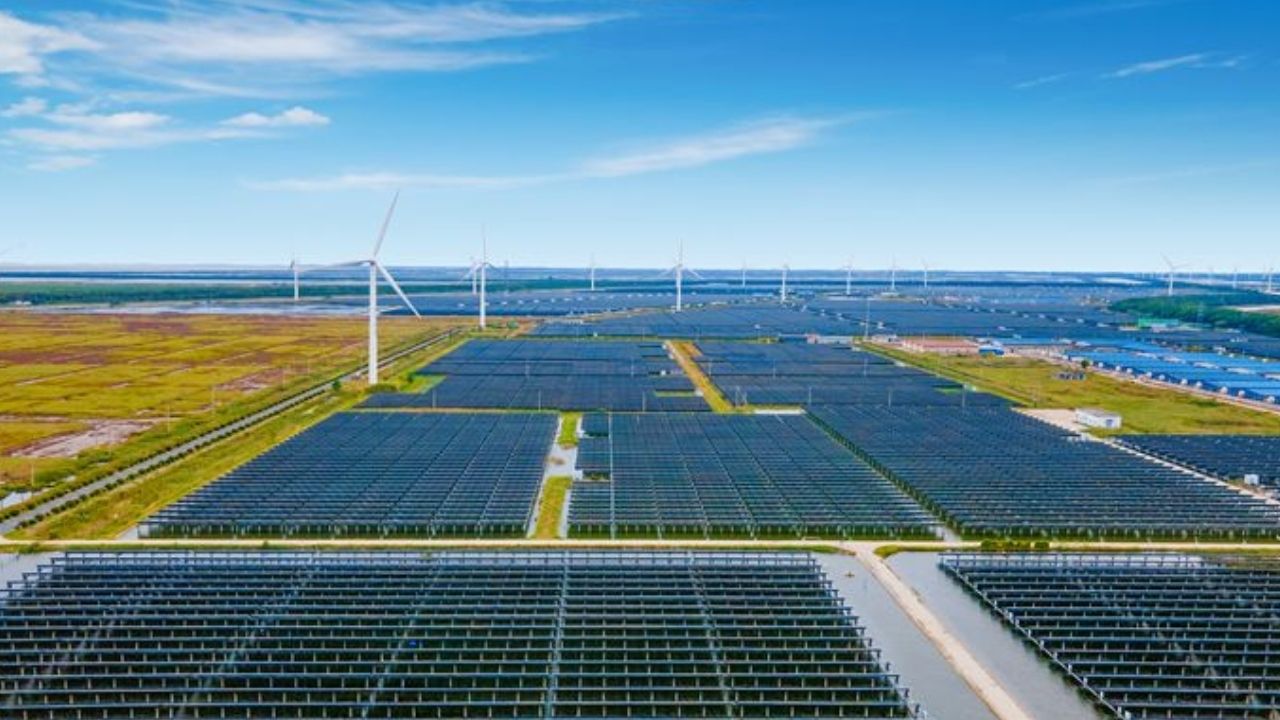Energy Update
In four years, 1.2 lakh villages were electrified in Uttar Prades

LUCKNOW: Nearly four years after signing the ambitious ‘Power for All’ agreement with the Centre, the Uttar Pradesh government has electrified over 1.21 lakh hamlets having population of 250 and above.
According to state government data, the number of newly-electrified villages rose from 1.28 lakh in 2017 to 2.49 lakh in 2021. This is besides over 1.2 crore consumers, mainly in rural areas, being covered under Saubhagya Scheme envisaging free electricity connection.
UP provided the most number of connections under the Saubhagya scheme in last four years.
According to UP energy minister Shrikant Sharma, power supply to rural areas increased by 54% in four years. “The aim is to provide adequate power supply to villages. We are ensuring equitable distribution of electricity to all areas,” he said.
Data shows that the number of electricity connections increased by around 63% between 2017 and 2020 (till December).
UP had 1.8 crore registered consumers in 2017 and the number has now gone up to 2.93 crore. The number of consumers grew by over 10%, from 2.59 crore in 2019 to 2.93 crore in 2020.
UP Power Corporation Limited (UPPCL) officials said the revenue recovery was very important for the maintenance of power distribution system.
“Officials of all distribution companies have been asked to issue electricity bills timely and carry out door-to-door campaign for revenue collection. This is besides the one-time settlement (OTS) scheme which has been brought in by the Uttar Pradesh Power Corporation Ltd (UPPCL) to tap revenue from consumers who have not been paying bills causing heavy losses to the power utility.
At the same time, the state government has expedited separation of rural feeders to reduce load and increase the quantum of power supplied. Data show that the number of rural feeders increased from 8,760 in 2017 to 11,794 in 2021.
This has ensured around 18 hours of power supply to rural areas. As per the power supply roster, tehsils and districts are scheduled to get 21 hours and 24 hours of power supply.
The state government has also managed to bear the peak load demand which increased from 18061 Mw in 2017 to 23867 Mw in 2020. This was helped by a robust transmission system under which 220 KVA transmission substations increased from 98 to 130 in January 2021.
TNN


Conversation
- Info. Dept. Reg. No. : 254/073/74
- Telephone : +977-1-5321303
- Email : [email protected]















